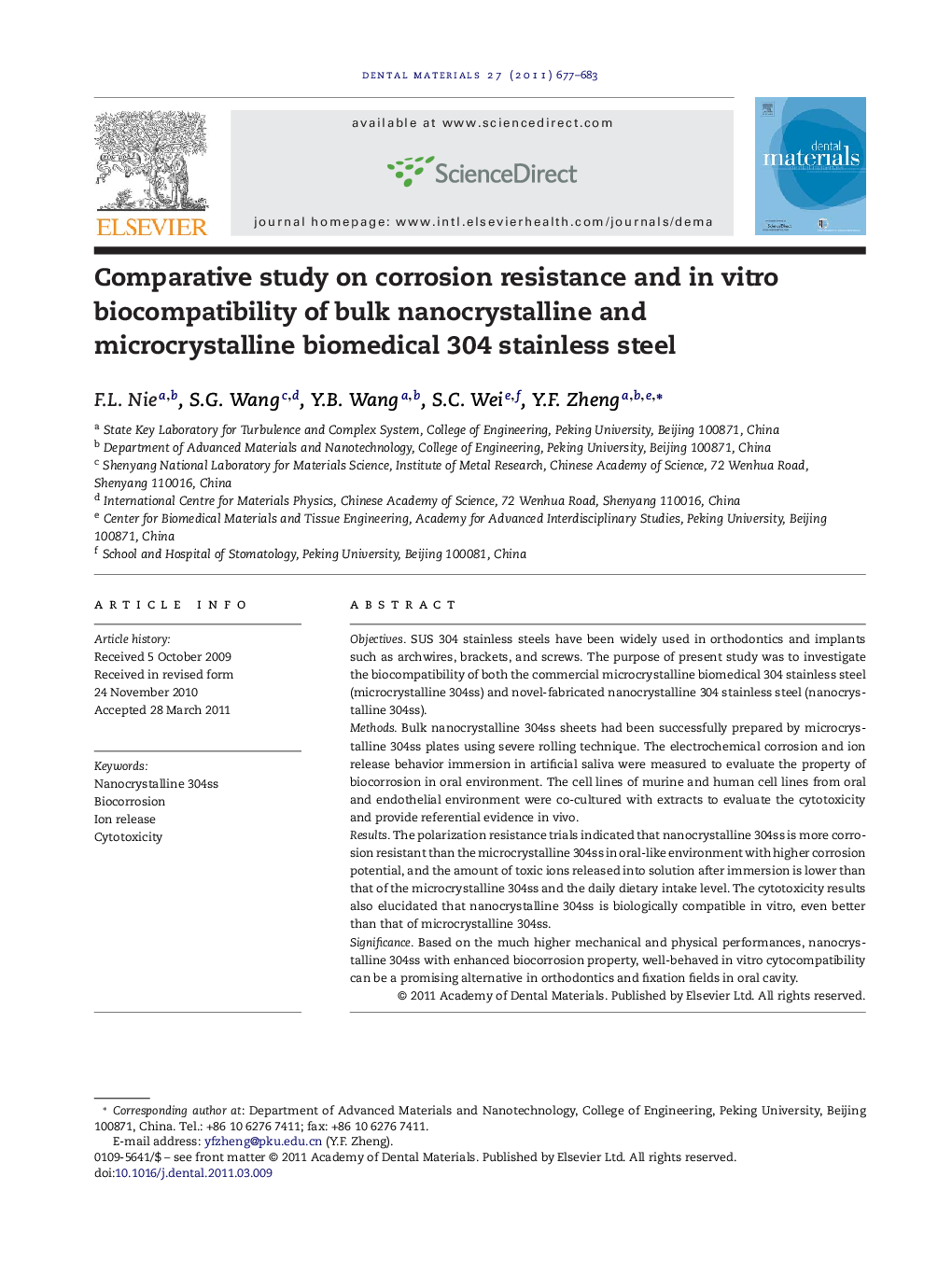| Article ID | Journal | Published Year | Pages | File Type |
|---|---|---|---|---|
| 1421856 | Dental Materials | 2011 | 7 Pages |
ObjectivesSUS 304 stainless steels have been widely used in orthodontics and implants such as archwires, brackets, and screws. The purpose of present study was to investigate the biocompatibility of both the commercial microcrystalline biomedical 304 stainless steel (microcrystalline 304ss) and novel-fabricated nanocrystalline 304 stainless steel (nanocrystalline 304ss).MethodsBulk nanocrystalline 304ss sheets had been successfully prepared by microcrystalline 304ss plates using severe rolling technique. The electrochemical corrosion and ion release behavior immersion in artificial saliva were measured to evaluate the property of biocorrosion in oral environment. The cell lines of murine and human cell lines from oral and endothelial environment were co-cultured with extracts to evaluate the cytotoxicity and provide referential evidence in vivo.ResultsThe polarization resistance trials indicated that nanocrystalline 304ss is more corrosion resistant than the microcrystalline 304ss in oral-like environment with higher corrosion potential, and the amount of toxic ions released into solution after immersion is lower than that of the microcrystalline 304ss and the daily dietary intake level. The cytotoxicity results also elucidated that nanocrystalline 304ss is biologically compatible in vitro, even better than that of microcrystalline 304ss.SignificanceBased on the much higher mechanical and physical performances, nanocrystalline 304ss with enhanced biocorrosion property, well-behaved in vitro cytocompatibility can be a promising alternative in orthodontics and fixation fields in oral cavity.
